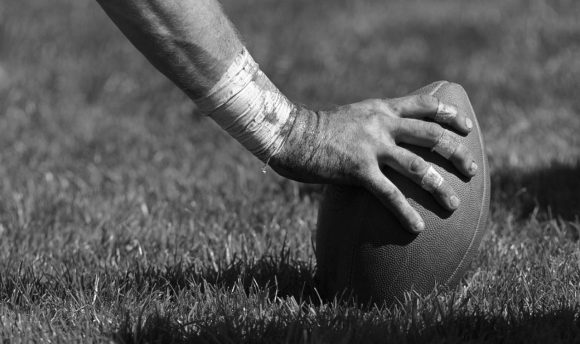Sage Rosenfels
Former quarterback for the Washington Football Team,* Miami Dolphins, Houston Texans, Minnesota Vikings and New York Giants. Football commentator and podcaster.
Athletes and entertainers face unique wealth management opportunities, considerations and challenges. The athletes and entertainers we interviewed shared their personal stories and perspectives to highlight the need for more financial education in the sports and entertainment world. We thank them for being strong advocates of financial literacy.
Sage’s advice
Sage’s advice
“You don’t need a background in finance or accounting to learn about investing. I was a marketing major. I retired at age 35 without worrying about finding another job or how I would take care of my family.”
A childhood with room to roam
Sage grew up on 10 acres in the Iowa countryside with parents who raised chickens and grew their own organic fruits and vegetables. His dad, Robert, sold wood-burning stoves, and his mom, Jamie, was a midwife. They had moved from Chicago to raise their five kids in an idyllic place where they didn’t have to lock their doors at night. “I was taught that material things were not the goal. Having things was not the key to happiness.” It’s a perspective that has kept Sage grounded throughout his NFL career and beyond.
Winning the NFL lottery
A five-sport letterman at Maquoketa High School, Sage won a football scholarship to Iowa State University, where he was a star quarterback. The Washington Football Team chose him in the fourth round of the 2001 NFL Draft. From the beginning, Sage was keenly aware that careers in professional football are short-lived. “Every year I made it in the NFL was like winning the lottery, and there was no guarantee I would win again.”
Sage got married in college and was a young father. He saved as much as possible so he could take care of his family, regardless of what happened with his football career. At the time, he was making around $600,000 per year with salary and bonus playing for the Miami Dolphins. “Every dollar I saved was a dollar I didn’t have to earn later.”
Given the physical toll of playing, Sage knew that even in the best case scenario he would retire from football in his thirties. Only a small stratosphere of superstar athletes is able to monetize their celebrity status after retirement, so that was not something Sage could count on. He wanted the option of never working again after football. “I didn’t want to be the 35-year-old intern in the workforce. My classmates would be a decade ahead of me in their careers. I’d be the rookie at any company.”
Every year I made it in the NFL was like winning the lottery, and there was no guarantee I would win again.
Retirement-level money
In 2006, the Houston Texans offered Sage a four-year, $6 million contract, $2 million of which came as a signing bonus. He started asking himself how much money he needed to retire after football. “What’s my yearly burn? What do I need to be happy? That’s the key.” The standard advice Sage heard was for players to save 30% of their income. He saved 80% and still enjoyed a nice lifestyle. The values he was raised with helped him avoid the temptations of flashy spending.
Sage cautions that professional athletes come across money at a young age, when they have little experience with finances. “Just because you have money doesn’t mean you know a lot about money.” Although he was a marketing major who never formally studied finances or accounting, he made it a point to educate himself about investing. “I knew there was an overall number that I needed to reach before I could comfortably retire. I estimated I could earn around a 5% average annual return by investing long term in stocks and bonds. I let my money work for me.”
Start here
Start here
Together, we can build your legacy.
Start here
Start here
Together, we can help establish the legacy you want to leave.
Browse more profiles
Browse more profiles


